How and how often to water tomatoes in the greenhouse: tips from experienced farmers for a bountiful harvest
Novice gardeners may wonder how often to water tomatoes in a greenhouse. Solanaceae are moisture-loving plants, but along with this, dry air is important for them. Further in the article, you will learn everything about how to properly water tomatoes: what time is the best time to carry out the procedure, what methods of irrigation exist and by what signs you can determine the excess or lack of moisture.
The content of the article
Does the quality of the crop depend on watering
Tomatoes are heat-loving plants, so in the southern regions they can be grown outdoors... For gardeners from central Russia and Siberia, it is better to use polycarbonate greenhouses or temporary greenhouses for these purposes. In them, you can create all the conditions conducive to obtaining a bountiful harvest of nightshades.
Caring for tomatoes in a greenhouse has a number of features. In order for the plants to produce a good harvest, it is necessary to take into account the growth stage of the bush, change the frequency of watering and choose the optimal time for it. Irrigation can be done in different ways - it depends on the area of the greenhouse.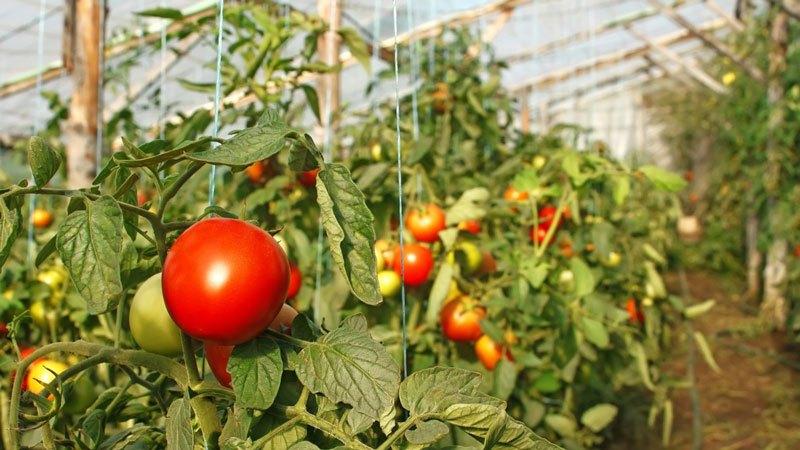
Features of the microclimate of greenhouses
The greenhouse allows maintaining favorable air temperature and humidity values for plants. In addition, it is possible to shelter the seedlings from strong winds or rain.
In summer, the humidity in greenhouses is 60-80%. On especially hot days, this figure can drop to 40%. If dry weather alternates with rainy, then the humidity can be 90%. Improper watering of tomatoes during this period will only aggravate the situation, since along with the need for moist soil, these plants need dry air for the full development of the ground part.
Important! When the humidity rises, the greenhouse must be ventilated. Musty air can reduce plant productivity.
The moisture content of the soil in the greenhouse should be 90%, the normal indicator for air is 50%. These conditions are suitable for the development of the bush, the formation of fruits and the protection of plants from various diseases.
The frequency of watering tomatoes in the greenhouse
Tomatoes require frequent irrigation, but many novice gardeners make the mistake of flooding the bushes. Due to the increased humidity, plants become more susceptible to diseases, their yield decreases. Drought is also harmful to seedlings, so it is important to observe the measure in matters of watering. In determining the optimal volume of water, it is necessary to take into account the indicators of humidity and temperature.
After planting seedlings, each bush must be watered abundantly. After that, you can wait 10 days for the plant to take over properly. Then the procedure is repeated every time as soon as the topsoil dries up.
So that moisture can get into the root system, you need to loosen the soil well before irrigation. It is enough to water the tomatoes every few days, butin hot weather and low humidity, the number of procedures increases... From the flowering period to fruiting, the number of irrigations is reduced, at the first signs of excess moisture (gray rot, rust lesions on leaves, stems and flowers), watering is stopped.
Important! Excessive moisture can cause seedlings to rot.
Amount of water at different stages of development
Solanaceae require different levels of moisture during growth, flowering and fruiting. Each stage of development is distinguished by its frequency of irrigation and volume of water.
When growing seedlings
Experienced gardeners prepare the soil before planting seedlings. In one week, top dressing is carried out to improve the properties of the soil, and in one day the area is watered abundantly.
As soon as the transplanting of seedlings from the greenhouse is over, each bush is watered with 4-5 liters of water. Drought during this period can lead to the death of the plant. It is possible to determine the lack of water by external signs: the tips of the leaves dry, the tomato begins to bog down in the ground, which means that its root system has weakened. It is very difficult to restore a plant that has suffered from drought.
During growth and before flowering, tomatoes need abundant irrigation. Water helps the plant gain the necessary green mass and prepare for fruit formation.
3-4 liters of water is enough for one bush, watering is carried out every 2-3 days.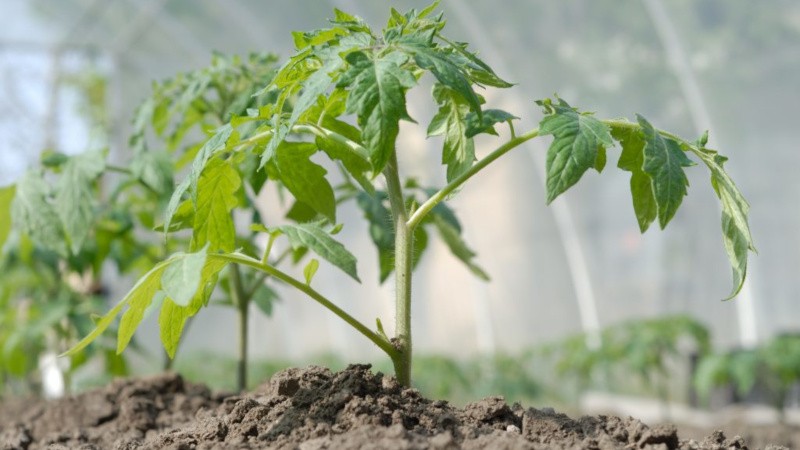
During flowering
Once the plant is ovary and blooming, you can reduce the irrigation frequency to once a week. When flowering, you will need to increase the volume of water used to 5 liters.
During fruiting
During this period, the frequency of irrigation is increased up to twice a week. Tomatoes do not need a lot of water - just enough to keep the soil moist at a depth of 20 cm.
As soon as the first reddened fruits appear, watering is done once a week with a small amount of water. For the ripening of tomatoes, sunlight is more important; without proper lighting, their growth and ripening slows down.
The amount of water used during this period depends on the plant variety. To get a good harvest, plants need to be watered evenly and given good light.
Read also:
What is tomato bacteriosis and why does it appear in fruits in a greenhouse.
Favorable time of day for watering
To ensure good plant care, it is better to determine the time at which watering will be carried out immediately after planting the seedlings in the ground.
The best time to moisten tomatoes outdoors is early morning or late evening. If you water at other times, the hot sun will dry out most of the moisture entering the ground, and there is a good chance that splashes will hit the leaves, causing burns.
Greenhouse tomatoes can be watered at any time in dry and warm weather. It is important to take into account that the earth is poorly warmed up in the morning, so it is advisable to postpone the procedure until the afternoon.
Late evening time is also not good to moisten the soil in the greenhouse, if it is closed at night, since conditions will be created for excess moisture. If there is no other time for irrigating the plants, then after it ends, you need to ventilate the room so that excess moisture is removed. In rainy weather, watering tomatoes is best done in the morning.
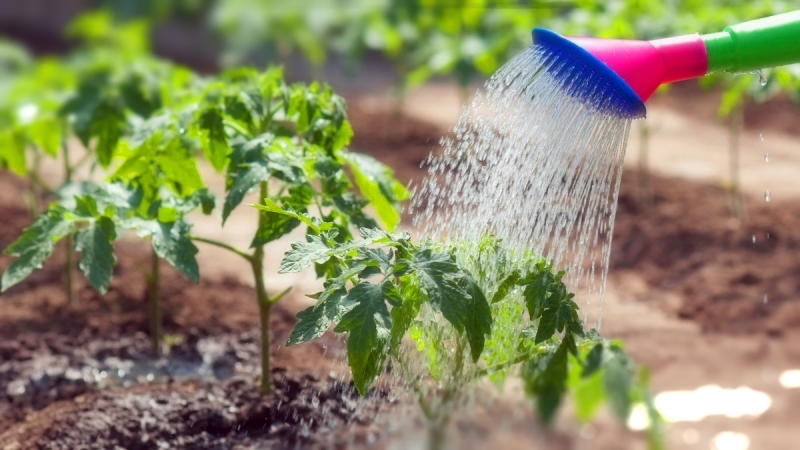
Regardless of the time of the procedure after it you need to leave doors and frames open so that excess moisture evaporates. If you close the greenhouse immediately after wetting the soil, the increased humidity will cause fungus to develop.
Caution! Do not water the seedlings with cold water. It is best to use water with a temperature of 23-24˚С.
Signs of excess and lack of moisture
Tomatoes are moisture-loving plants, but they can be drought tolerant. During the growing season, the seedlings are watered abundantly, however, before flowering and fruiting, the amount of water must be reduced in order to prevent rotting of the plants.
It is possible to determine whether the seedlings receive enough water by their external signs. Lack of moisture will affect the state of the foliage: the tips of the upper leaves will begin to dry out and curl.
Excessive irrigation will cause the plant to rot... This process can be recognized initially by the underside of the stem and foliage. Experts recommend that you immediately stop watering the seedlings or reduce the water consumption to a minimum.
During the ripening period, due to the large amount of moisture, tomatoes can begin to crack, which will make the plant susceptible to various diseases. Excessive water content in the root system can lead to late blight, a disease that can destroy the entire crop.
Types of watering
In order not to carry heavy watering cans, you can invest time and money in organizing an automatic irrigation system on the site. However, we will consider all the methods in order.
Manual way
The most common method for moistening tomatoes is with a watering can or a ladle.... Water must be poured at the root. This method protects the leaves of the plant from splashes, which can lead to the development of diseases. Used in small structures and outdoors.
Important! If a barrel is used to water the seedlings in the greenhouse, cover it with a lid or plastic wrap.
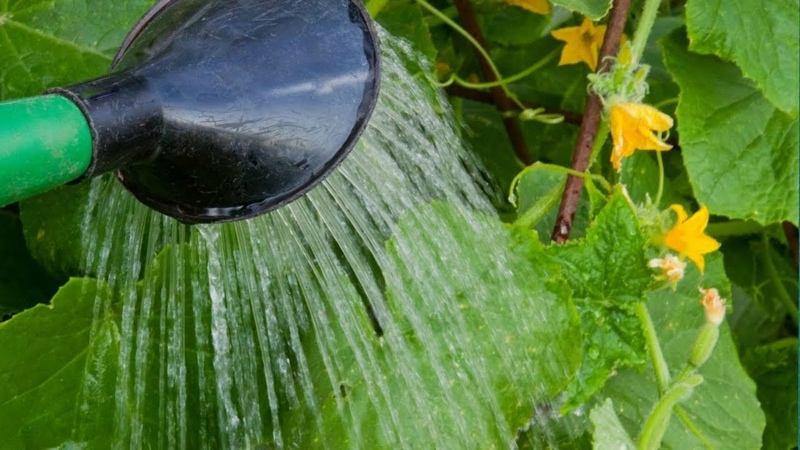
In summer cottages, many gardeners water tomatoes with a hose. During such irrigation, cold water is supplied with a strong pressure, which destroys the upper layer of the soil, while the lower layer is compacted.
The jet can damage the roots of the plant, and spray can get on the leaves.... During irrigation, it is very difficult to calculate the pressure and volume of water for each bush, so this method is in many ways inferior to conventional irrigation. There is a high probability of overcooling the root system of the plant.
Automatic system
In many industrial greenhouses, automation is installed that provides water supply to the plant roots. The disadvantage of the system is the high cost of equipment. Advantage - saves time and resources, ensures optimal moisture content, protects the soil from washing out and salting.
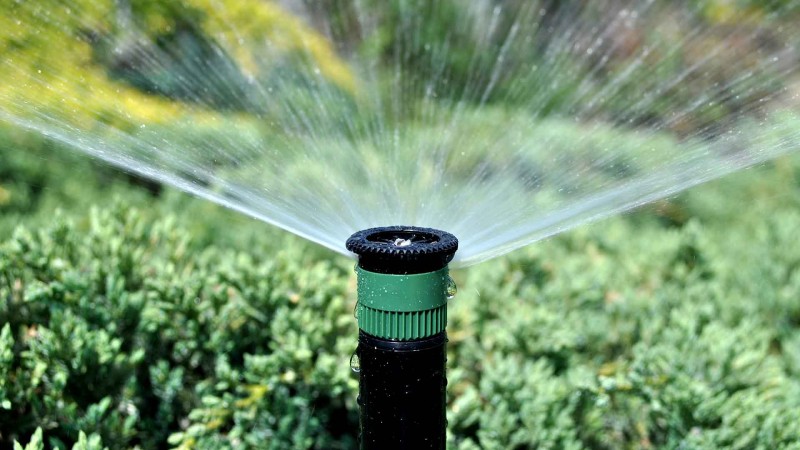
Drip irrigation
This automatic irrigation system is considered one of the most efficient, as it allows for uniform watering of plants. Drip irrigation contributes to the economical use of water.
Another advantage of this method is that it does not compact the soil, which means that the gardener does not need to spend time loosening it... It is used in large greenhouses; moisture is supplied to the roots through special tubes.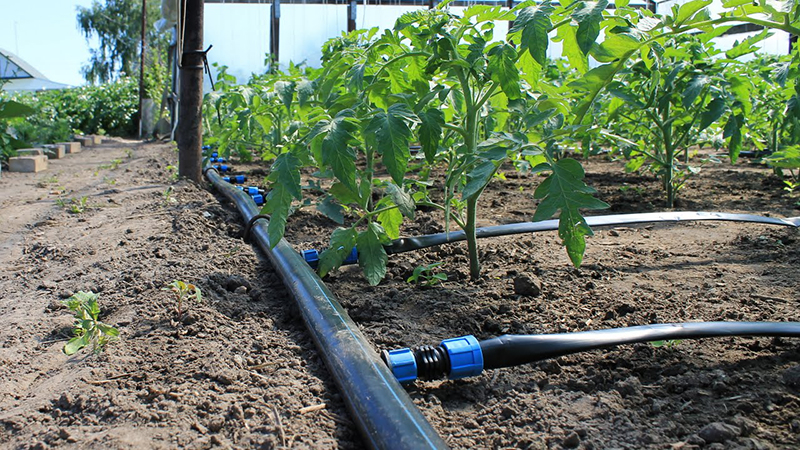
Conclusion
Caring for tomatoes is a laborious process, but the result is worth it. In order to prevent the death of the crop, it is important to take into account the plant's water requirements at different periods of growth, temperature and humidity indicators. It is better not to use cold water for irrigation; many summer residents use water settled in a barrel for the manual irrigation method.
The procedure is best carried out in the morning or evening, but in the conditions of growing vegetables in greenhouses, irrigation time does not play a big role. To minimize resource costs, owners of large greenhouses can install an automatic humidification system.